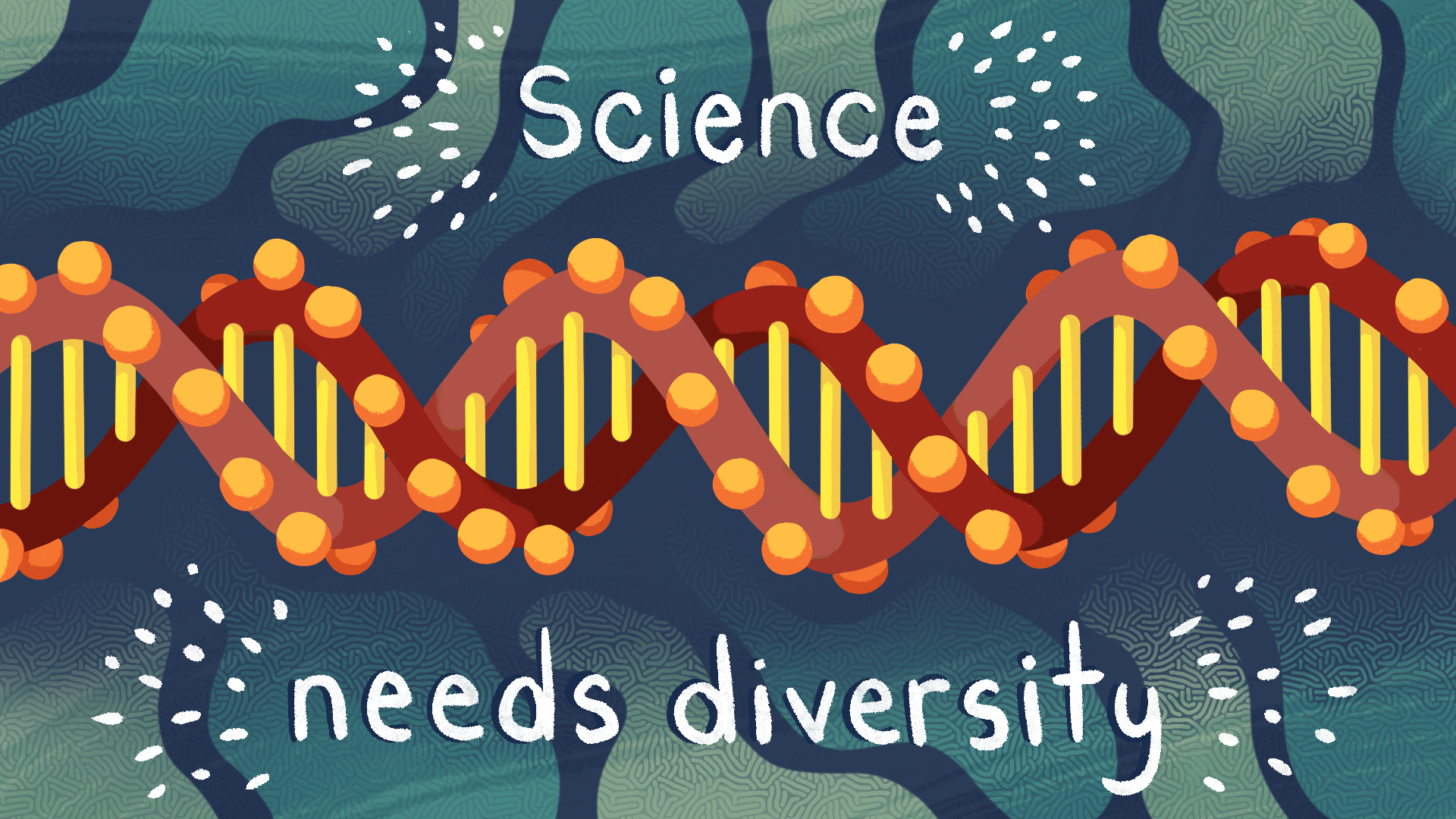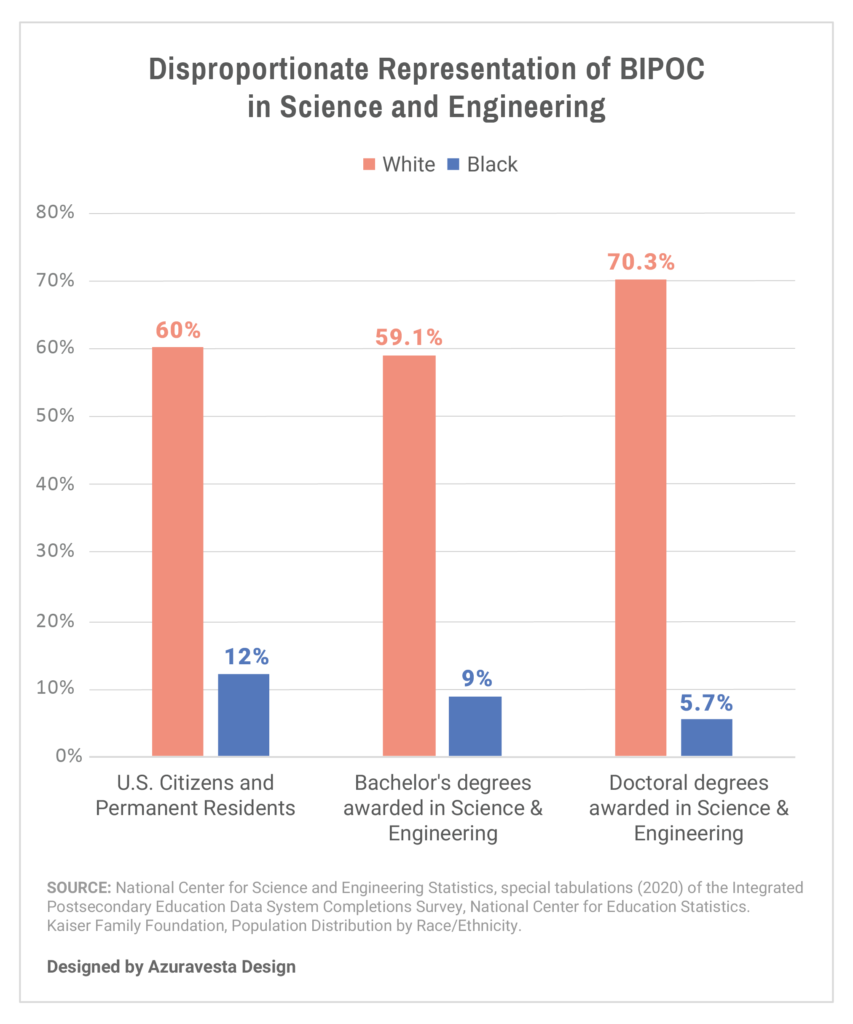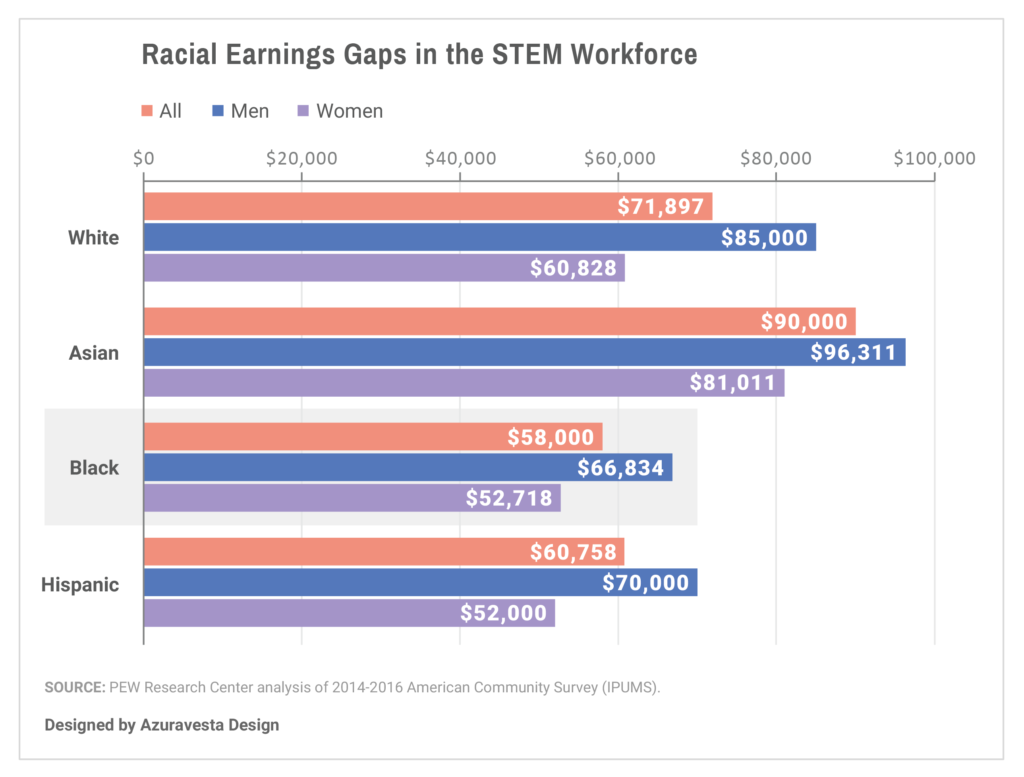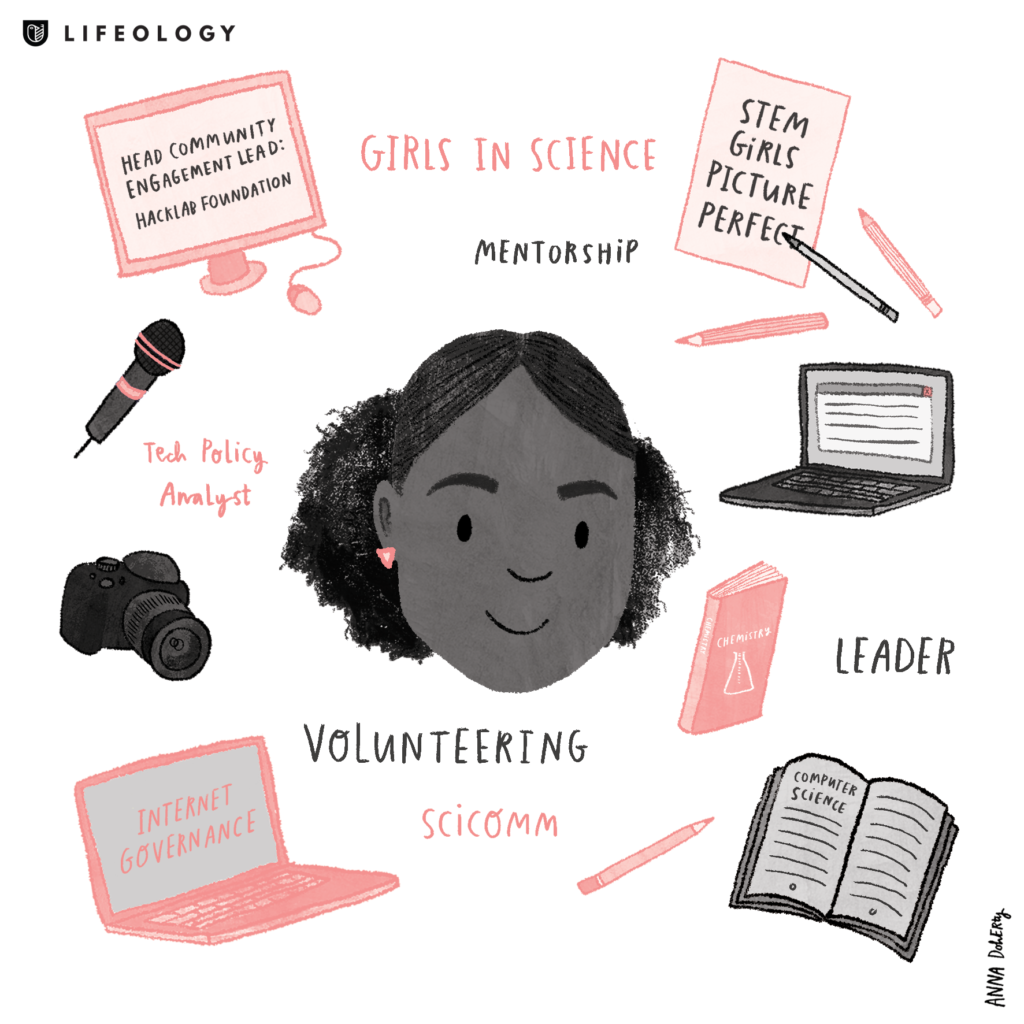
Art by Avesta Rastan
The debate about the need for diversity in Science, Technology, Engineering, and Mathematics (STEM) fields is not a new one, but it is more relevant and more important than ever. This year has amplified the challenges that Black/Indigenous People of Colour (BIPOC) face on a daily basis – one of the many is the adversity they face in academia and STEM. The COVID-19 pandemic has also made the general population realize the need for science, as the development of a vaccine is our only hope of curing this disease. And let’s not forget the looming call for action to fight the climate crisis, another global issue that demands extreme scientific advances that has taken a backseat during the current tumult of the world.
The fact stands that to produce the best research possible to tackle these issues, and to create an environment of equal opportunity, we need more diversity in STEM.
Learning From Past Mistakes
Before diving into the why, we need to understand the issue at hand. Based on data from the National Science Foundation (NSF), we can see that BIPOC are disproportionately represented in science and engineering. In 2018, only 9% of students receiving undergraduate degrees were Black, compared to 59.1% who were white. As the education level increases, we can see that a mere 5.7% of Doctoral graduates are Black, compared to 70.3% who are white. At both the undergraduate and graduate levels, Black students are underrepresented compared to the population of Black U.S. citizens and permanent residents.

BIPOC are disproportionately represented in science and engineering.
Additionally, there is a clear salary disparity for racial minorities, in particular Black people, within the STEM workforce. On average, Black people make approximately $13,000 less than a white person in a similar position. This is further amplified in Black women, who make almost $20,000 less than the average white person, and a whopping $32,000 less than white men.

In addition to the disparities in salary and opportunity, Black people regularly face more workplace harassment – yes, in academia too. A recent movement on Twitter, which can be followed using the hashtag #BlackintheIvory, has been featuring the voices of BIPOC who have faced racism in academia. This movement only scratches the surface of what BIPOC have to face, and they are only sharing the stories they feel comfortable making public.
One example involves a white man directly telling a Black woman that he would have been accepted into medical school and become a doctor if they didn’t start “handing out” admissions to Black women instead. Another Black woman was physically blocked from entering the faculty room to get her mail on her first day of work, and her opposer threatened to call the police even after she showed her faculty ID. In another case, an undergraduate student was harassed by a professor who threatened to call the police when the student refused to exit the lecture hall after calling out the professor for a racist comment.
These are only a few of the many examples out there – I urge you to read the threads on Twitter to gain some insight on the personal struggles Black people deal with in academia. What about the people we don’t hear from? The ones who decided not to pursue higher education because of the hardships they faced? Or because they didn’t have access to the educational resources needed? The silent voices speak volumes too.
The Evidence Favours Diversity
Now that you have more insight regarding the issue at hand, we can explore how diversity leads to better innovation and research. One of the most admirable things about the scientific community is their desire to progress humanity, as a whole; however, in order to achieve that goal, we need collaboration amongst people of all backgrounds and perspectives. Outlined below are some research-based examples that demonstrate how science benefits from social diversity (race, ethnicity, and gender).
Example 1: Teams produce high-quality knowledge more than individuals.
Wuchty et al. (2007) analysed 19.9 million papers over 5 decades and 2.1 million patents and found that teams produce better, more frequently cited research than solo authors. This suggests the process of scientific discovery has changed from the previously accepted “individual as genius” idea to group collaborations, which inherently bring more diversity.
“Research is increasingly done in teams across nearly all fields … suggesting that the process of knowledge creation has fundamentally changed.”
Example 2: Diversity increases problem-solving ability.
Joan Ferrini-Mundy’s study (2013) highlighted how diverse experiences and interactions can increase cognition and problem-solving as well as increase the global competitiveness of STEM businesses. This reveals that diversity brings both academic and economic benefits.
“Diversity of perspectives, ideas, and priorities comes from varied backgrounds, experiences, and cultures, and can help shape science and engineering.”
Example 3: Diverse classrooms enhance educational outcomes.
In a study conducted by Patricia Marin (2000), it was found that multi-ethnic/multi-racial classrooms increased the educational potential. The enhanced educational outcomes of the study included:
- For faculty:
- Expanded research
- Enhanced learning
- For students:
- Challenged stereotypes
- Broadened perspectives
- Stimulated critical thinking
- For classrooms:
- Enhanced pedagogy
“Multi-racial/multi-ethnic classrooms challenge students’ stereotypes, broaden their perspectives, and stimulate critical thinking.”
Example 4: Racial minorities increase innovation.
Antonio et al. (2004) found that the opinions of racial minorities are perceived as more novel and can promote complex-thinking in higher education. Researchers provided both Black and white students with unconventional opinions regarding social issues to present to a group. When a Black student presented the opinion to white students, their opinion was perceived as more novel and led to broader thinking compared to when a white person presented the same opinion.
“Positive effects … were found when the groups had racial- and opinion-minority members and when members reported having racially diverse friends and classmates.”
Example 5: Diverse groups do better problem-solving than white groups.
A socially-diverse group of problem solvers of regular ability outperform a homogenous group of high-ability problem solvers, as found in Hong and Page’s study (2004). This suggests a difference in approach to complex problem-solving may play a more important role than academic ability.
“When selecting a problem-solving team from a diverse population of intelligent agents, a team of randomly selected agents outperforms a team comprised of the best-performing agents.”

Meet diverse women in science fields in Lifeology’s Women in STEAM illustrated card deck.
Conclusion
During these times, it’s easy to feel overwhelmed. The continuous stream of information makes it difficult to know what the right actions are. But there are some great resources that you can start with. Specifically within academia, Jasmine Roberts has summarized 10 things White academics and higher-education professionals can do to support Black faculty, staff and students.
In addition to this, here is a list of actions that you can take to start your journey in creating a more inclusive, diverse environment in STEM:
1. Educate yourself so that you understand the problem. You’re reading this, so give yourself a pat on the back – you already started the first step! Next, share what you’ve learned with your non-Black friends and colleagues, recuperate, and repeat. If you are a student or professional in STEM, take the time to understand the climate of your campus or workplace. Is it inclusive? Are marginalized groups properly represented? Are there opportunities, funds, and scholarships for racial minorities?
2. Acknowledge that modern science was founded by white male colonialists. Now, I don’t say this to make you feel bad about the roots of science or your place in it, but rather to face the facts and learn from history so we do not repeat its mistakes. This topic warrants its own blog post, but many authors have already written books on this issue. Ebony and Ivy: Race, Slavery, and the Troubled History of America’s Universities (2014) by Craig Steven Wilder dives into how higher education directly profited from slavery and racism. Angela Saini’s Superior: The Return of Race Science (2019) investigates modern science’s complicated, interwoven history with racism. I just began reading the latter myself and invite you to join me.
As Saini says, “[Racism] is a toxic little seed at the heart of academia. However dead you might think it is, it needs only a little water, and now it is raining.” If it was raining then, it’s pouring now.
3. Seek out, support, and fund mentorship opportunities for Black students in STEM. For example, MUSE (Mentorship for Underrepresented STEM Enthusiasts) is a platform specifically created for this purpose – to connect underrepresented students with STEM professionals who can provide mentorship. The pressure shouldn’t be on BIPOC faculty and staff either. Think about how you can help mentor and support your own friends and colleagues who identify as Black. What has your privilege given you access to that you can share? How can you make your voice heard and take action in your lab, workplace, or campus?
4. Examine immediate areas in your workplace or school where you can improve diversity and inclusion. Faculty – make sure you aren’t unintentionally participating in favouritism, don’t shy away from speaking out for fear of judgement from other faculty, and highlight the accomplishments of your Black students. Grad students and postdocs – you can act as mentors to Black undergraduates and push institutions to provide better orientation and diversity training. Students – demand changes to curricula that aren’t inclusive and stand by your Black classmates if you witness racism.
5. Engage in local initiatives and events that advocate for diversity in STEM. Do a quick Google search to see if your school or workplace has any initiatives you can get involved in, or if there are any events you can attend. To name a few, Inspiring Diversity in STEM is a grassroots initiative based out of Western University, Canada, that helps break down the barriers faced by underrepresented groups. NCORE is an annual conference that provides a forum for discussion regarding issues of race and ethnicity in American higher education. UC Davis hosts a Diversity in STEM conference every year.
This list is by no means exhaustive and is intended to provide you with a starting place. It’s up to you to continue the conversation and take action. The lack of diversity in STEM isn’t a problem that will disappear in a week, a month, or even a year. It will require continued effort across the globe, now and into the future.
If we take actions to resolve our prejudices, share our knowledge with others, and engage in activities to change the biases of the higher-education system, little by little we can make STEM equal for everyone, regardless of race.




